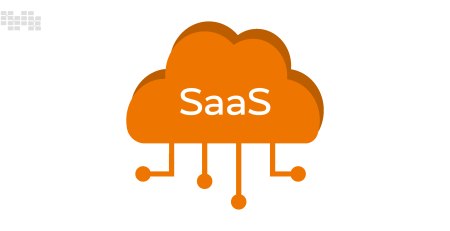What are Daily Scrum events?
Scrum events are one-of-a-kind daily routines that can make or break a team’s long-term effectiveness.
To maintain productivity and stay up with progress, every agile team should have daily scrum meetings up their sleeve today. As developers of the Agile Development Assistant Nile Bits, we cannot emphasize enough how beneficial these agile events are in keeping everyone focused, productive, and pulling in the same direction.
We’ve been working hard for more than 6 years to help our customers get the most out of Slack by automating standup meetings, retrospectives, and other agile processes. We’ve answered a lot of queries about daily scrum meetings in agile teams over the years.
So, in this article, we’ll go through the fundamentals of running daily scrums. Our Nile Bits team is ready to provide the best daily scrum formats, as well as essential insights and must-have tools, to help you make the most of your scrum events.
Daily Scrum Event: Main Aspects
Scrum is a well-known agile product development ceremony, and for good cause.
Daily Scrum meetings are brief, weekly gatherings in which team members assemble to discuss progress and triage new issues.
However, this brief definition falls short of capturing the key elements that distinguish a productive daily scrum from a waste of time.
The true organization of the Scrum Master’s work is where this greatly desired effectiveness lies, not merely in the fact that it runs. So it’s critical to understand the purpose of daily scrum meetings and why we need to gather our staff every day and tease them with the same repeating questions.
How to Run Daily Scrum?
There are three cornerstone daily scrum questions that often make up an efficient scrum discussion on scrum events:
What did you do yesterday?
What will you do today?
What blockers stand in your way?
Here’s an example of a possible response to these inquiries:
What did you do yesterday?
I finished working on the bugs yesterday.
What will you do today?
Today I will begin working on Task 1 of the project.
What blockers stands in your way?
Because of the first incorrect methodology, working on bugs took far too long. The algorithm will be changed the next time.
How long should daily scum last?
Everything is pretty basic here in terms of time — any scrum meeting has a set time limit – up to 15 minutes! These scrums aren’t supposed to be long, winding gatherings.
It is run at the same time and place every working day, preferably in the morning, for convenience. Because this will agitate employees as soon as they arrive at work, the first step is to “tune up their wits,” recall the previous day’s responsibilities, and make a strategy for the current day. The daily scrum meetings will never be called off!
Who must attend Daily Scrum?
This event is for the Developers, Scrum Master, and Product Owner, according to the scrum daily meeting rules. If the Product Owner or Scrum Master is actively working on Sprint Backlog items, they are considered Developers.
Daily Scrum or Daily Standup: where is the difference?
So, we already know what a daily scrum is, but the word “daily standup” encompasses the same elements and functions. The Scrum Guide defines a daily scrum as an event that takes place every day. So let’s get right to it. The Scrum handbook states, “According to the Scrum guide:
“The Daily Scrum is a 15-minute event for the Developers of the Scrum Team. To reduce complexity, it is held at the same time and place every working day of the Sprint. If the Product Owner or Scrum Master are actively working on items in the Sprint Backlog, they participate as Developers.”
The daily standup meeting is the same team meeting with the same goals; the only difference is that there are no hard rules and no Scrum guide advice.
Attendees
As a result, anyone on the team can participate in the daily standup and speak up! They might be testers, designers, or marketers, for example. Go ahead and do it if the team is at ease and sees the benefit in the presence of others. Only the development team is expected to attend and participate in daily scrum meetings, and the Scrum Master is required to manage these meetings.
Time restrictions
A 15-minute time limit is not required for the daily stand-up. A meeting can run past its allotted time.
Right terms
Last but not least, large agile teams include individuals with varying levels of physical fitness. Some team members are unable to stand or find it difficult to do so. So, don’t you think they’d be offended if they were forced to attend a stand-up meeting?
Make your Daily Scrum even more effective
There’s always room for growth. For a long time, our Nile Bits expert team has been studying numerous approaches, and we’ve even tried some of them ourselves. So now it’s time to share.
Here are some daily scrum meeting recommendations to help you get the most out of your daily activities.
Clear Agenda is key to success
Agenda items will keep you and your team on top of your sprint whether you’re meeting in person or asynchronously.
Agenda template for daily scrum meetings:
1. Gathering. You can turn on the music, share the latest news or include a presentation with a motivational quote.
2. Main body. Everyone begins to answer the main questions in turn. Here you can come up with an unusual order of priority and use some stand-up best practices and ideas to determine the order of speaking at the team meeting including:
- Round robin – the next person on the left/right has to continue;
- Passing the baton – the person who is done presenting passes a sacred item (it could be heavy enough so that a person has a desire to get rid of it as soon as possible) to a teammate of their choice, and that person has to continue;
- Walk the Board – go over the board and start with the Kanban cards that are furthest to the right, usually done or close to being finished. Respectively each card’s owner must talk about it.
3. Final. You can end on a cheerful note by telling a joke or sharing a funny meme in a presentation. Well, or just wish your colleagues a good working day.
Three important scrum questions:
Sticking to three major topics is the easiest approach to keep your scrum meeting format focused and keep everyone on track.
1 – Accomplishments
2 – Goals
3 – Blockers
This method of progressing in small increments helps to keep the meeting focused on particular projects. Anything that need further attention can be discussed after the meeting by the relevant parties.
Stop Over-formalizing the process
A daily scrum is designed to give its participants a boost of energy. So don’t make your scrum meetings too complicated. Your imagination is the only limit here. You can play a popular mood track while a team is assembling, or provide breathing or physical activity before the meeting begins — this helps to keep meetings light-hearted. Finally, lighten the mood by sharing a motivational quotation or a lighthearted joke.
A trending gif or a witty meme sent in the feedback is also a terrific way to finish if the team works remotely.
Brief and to the point
It’s critical to give each team member a chance to speak up. If you see that particular team members have a tendency to ramble, reinforce this at the start of each scrum.
Same time and same place each day
Daily scrums should be held in the morning and at the same time and location each day. You may need to plan it for later in the day if you have remote staff in different time zones. Alternatively, you can use numerous standup solutions for sprint meeting events to automate this procedure.
Make it easy to connect
If your team is dispersed and needs to connect for the daily scrum meeting, make sure they have access to an easy-to-use video conferencing solution that works across numerous devices or employs other technologies for agile event automation.
Must-have Tools for Remote Scrums, To use or not to use, that’s the question
As the entire world moves online, tools for remote and asynchronous work have gained in favor. The ideas discussed in this article will assist you in structuring and facilitating your team’s remote daily scrum.
Digital Task Board Tools
In the same way that using a physical task board as the focal point of discussion during your remote daily scrum helps team members connect with their work on a deeper level and think more deeply about a task, its requirements, and their commitments, using a digital task board as the focal point of discussion during your remote daily scrum helps team members connect with their work on a deeper level.
There are other options available currently, including Trello, Jira, Azure DevOps, Click Up, and others. They’re all used as a substitute for actual surfaces.
Video Conferencing Tools
There are a variety of video conferencing options to choose from. On the market, there are a variety of smart, easy-to-use, and trustworthy video conferencing systems, many of which are conveniently built-in to our everyday gadgets. All of this enables us to maintain virtual eye contact, share the screen, demonstrate presentations, and have a working dialogue about various subjects.
Digital Scrum Master Tools
The Standup Bot is a digital Scrum Master that works with Slack and Microsoft Teams. It is now utilized in remote and distributed teams to automate Agile and Scrum rituals. It automates almost all project management activities, including daily scrum meetings, retrospectives, backlog grooming, planning poker, sprint planning, and more.
- No time zone pain – It doesn’t matter what your time zone is, all can be conducted asynchronously.
- Even shorter – Online asynchronous daily scrum requires even less time than a typical offline daily scrum meeting (2-3 minutes).
- Automation – All responses are well-structured and quick-sent to the Scrum Manager.
- Comprehensive Integrations – Standup bots integrate with a variety of apps such as Google Calendar, Slack, MS Teams, Google Analytics, Jira, etc.
- Tracking Task Progress – It is easy to see which stage in the project everyone is in and how you and your team are arriving at your goals.
- Responsive Customer Support – All task management solutions for remote daily scrums offer quick chat /email /video conference response in case you need help.
- Ease of Use – It’s not difficult to run daily scrum meetings remotely! There are many solutions on the market that will help you. They can be used by beginners and expert project managers alike. They can be adopted by any remote team as well.













Leave a Reply